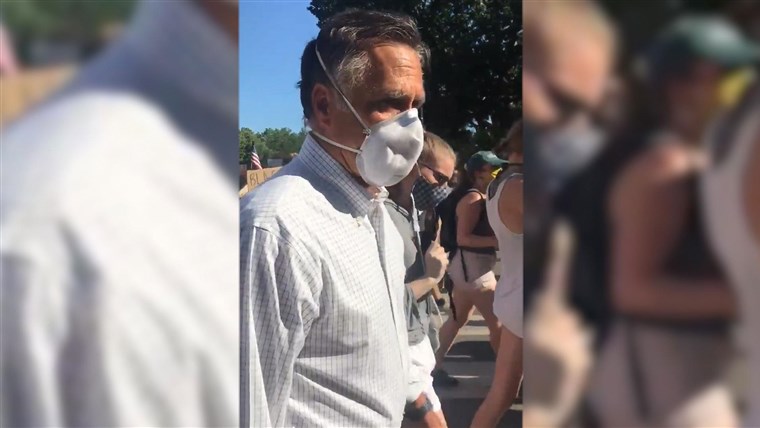Advertisement
On Politics
Two critical court decisions gave both parties hope in a state where election margins are often razor thin.
Hi. Welcome to On Politics, your guide to the day in national politics. I’m Nick Corasaniti, filling in on a Wednesday while Lisa Lerer is off.
Sign up here to get On Politics in your inbox every weekday.

Every decision that could change who gets to vote in Wisconsin, one of the swingiest of swing states, carries outsize weight. President Trump captured Wisconsin by less than 23,000 votes in 2016, the kind of razor-thin margin that could easily be repeated this November.
This week, the fate of Wisconsin voters whipsawed again in two critical court decisions, one celebrated by Democrats and the other by Republicans.
The development that elated Democrats concerned a hotly contested issue that had animated voters in the state’s mid-pandemic election in April: an effort to purge from the voter rolls more than 100,000 people with potentially out-of-date registration data just months before November’s election.
After months of legal wrangling, the decision over whether to go ahead with the purge rested with the Wisconsin Supreme Court, which leans conservative. The plaintiffs pushing for the purge argued that the case should be fast-tracked and heard outside the court’s normal schedule.
But the court rejected their plea in a 5-to-2 decision late Tuesday night, instead deciding to hear oral arguments in late September, making it highly unlikely the court will be able to rule on the case before Election Day in November.
A conservative-leaning justice, Rebecca Bradley, wrote in a dissenting opinion that a ruling will now most likely not be made until 2021.
“The people of Wisconsin would most likely not receive a decision in this case until after every single one of Wisconsin’s 2020 elections has come and gone (including the presidential election in November) and nearly an entire year after petitioners’ commencement of this time-sensitive appellate litigation,” Justice Bradley wrote.
The voter purge effort initially targeted more than 230,000 names, but as voters responded and updated their information, the list has since dropped to about 130,000.
Wisconsin election rules state that any change to the voter rolls must occur 30 days before Election Day, so the time frame to purge the names after any court decision in the fall would be nearly impossible. Additionally, Jill Karofsky, the Democratic-backed candidate who won the statewide Supreme Court race in April, takes her seat in August, shifting the makeup of the court.
Democrats in the state celebrated the decision.
“The Wisconsin Supreme Court’s decision to not consider purging hundreds of thousands of Wisconsinites from the voter rolls is nothing more than them upholding our democracy,” said Philip Shulman, a spokesman for the Democratic Party of Wisconsin. “As we move closer to the November election in the midst of a pandemic they should remember what they’ve proven they know — that voting is a fundamental right.”
Officials from the state Republican Party did not return requests for comment.
But as Democrats and voting rights advocates celebrated the scheduling fortune from the Wisconsin court, they were also reeling from a decision handed down Monday by a federal appeals court on multiple voting laws and regulations that had been pending for years.
The court, a panel of three judges appointed by Republican presidents, ruled that the early-voting period in Wisconsin would be no more than two weeks, rather than the six weeks that polls were open before Election Day in 2016. It also said that absentee ballots must be mailed — not emailed or faxed — to voters, and that voters must have lived in their current residence for 28 days, rather than the previous 10-day deadline.
State Republicans, who had pushed for the restrictions, welcomed the decision.
“It wasn’t about voters rights advocacy,” Mark Jefferson, the executive director of the Republican Party of Wisconsin, wrote on Twitter. “It was about Dems trying to tilt the field in their favor.”
The appeals court did provide some flexibility on the state’s voter identification requirements, ruling that expired student IDs are permissible at the polls, and that people without an ID who can produce an affidavit saying that they tried to procure one can also vote.
Drop us a line!
We want to hear from our readers. Have a question? We’ll try to answer it. Have a comment? We’re all ears. Email us at onpolitics@nytimes.com.
Many, many of you wrote in to respond to Jennifer Medina’s Monday newsletter about the calls for Joe Biden to pick a woman of color as his running mate. You had lots of thoughts about Mr. Biden’s choices! (Need a refresher? Here’s a guide to 13 women under consideration.)
A brief selection of your responses:
The vice-presidential choice for Joe Biden should be someone he truly believes would make a good presidential candidate in 2024. Far more important than someone he is compatible with. Since Kamala Harris was willing to put herself out there for Americans to get to know during the primaries, I think she is the one to watch.
— Chuck Richards, Seattle
The question is going to be: What are the foreign policy credentials of the vice-presidential candidate? Susan Rice has them from the start. Moreover, the security of the United States demands that foreign allies and adversaries understand with whom they are dealing. Ms. Rice’s participation in major foreign policy of the past would make that clear. She means business.
— Jan Galkowski, Westwood, Mass.
Tammy Duckworth! Political experience, great character, Asian-American, veteran with a Purple Heart, disabled, mother, well-spoken, calm. Perfect choice.
— Stephanie Song, Bergen County, N.J.
Let’s not forget that Elizabeth Warren received more votes than the other women running for president. And quoting from Jamelle Bouie’s piece: “If you want to let freedom ring, hammer on economic injustice.” Who better than Elizabeth Warren to make income equality a reality?
— Sheila Goldberg, Venice, Calif.
Mr. Biden’s choice for vice president should be strictly based on his or her political knowledge, background and ability to handle the job fairly and intelligently without specifically aiming for gender, color or religion.
— Lillian Brahms, New York City
It is crystal clear at this point in our history the clear-cut choice to run with Biden is Laura Coates, the CNN legal analyst. She has the presence, personality and intelligence that stands way above all others being considered!
— Denny Hamlin, Ridgway, Colo.
Thanks for reading. On Politics is your guide to the political news cycle, delivering clarity from the chaos.
On Politics is also available as a newsletter. Sign up here to get it delivered to your inbox.
Is there anything you think we’re missing? Anything you want to see more of? We’d love to hear from you. Email us at onpolitics@nytimes.com.
-
-
- Amy McGrath and John Hickenlooper, two moderate Democrats, won their Senate primaries. In Oklahoma, voters approved a Medicaid expansion.
-
- Here are 13 women who have been under consideration to be Joe Biden’s running mate, and why each might be chosen — and might not be.
-


